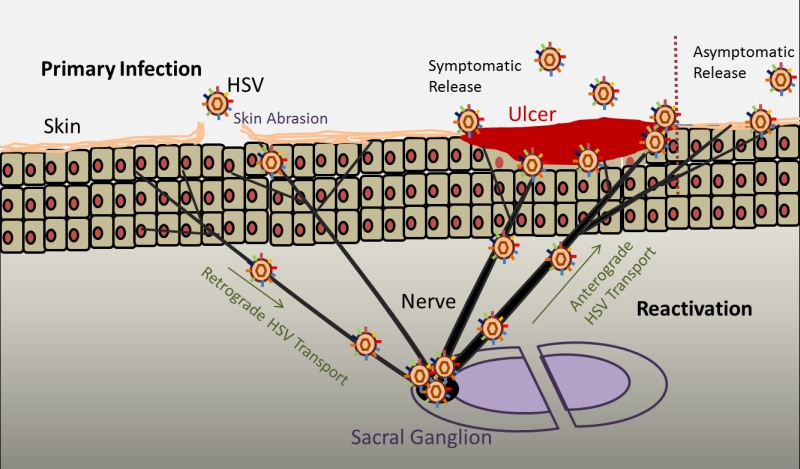Figure 2: Schematic of Primary Infection and Reactivation. Primary infection occurs when a host is exposed to the virus for the first time. When a person is exposed to HSV, the virus infects the epithelial cells. Depending on the immune system of the host, lytic infection leads to virus shedding that can cause symptoms such as ulcers or remain asymptomatic. After lytic infection, the virions reach the nerve endings and through a retrograde transport, reach the sacral ganglion where it establishes latency till the life of the host. Recurrent infections occur when the virus gets reactivated due to stress, environmental conditions and other unknown factors. Reactivation causes the virus from the sacral ganglion to travel to the site of primary infection or high nerve endings via an anterograde fashion where virus shedding can cause symptoms or remain asymptomatic depending on the host immune system.
By continuing to use the site, you agree to the use of cookies. more information
The cookie settings on this website are set to "allow cookies" to give you the best browsing experience possible. If you continue to use this website without changing your cookie settings or you click "Accept" below then you are consenting to this. Please refer to our "privacy statement" and our "terms of use" for further information.

